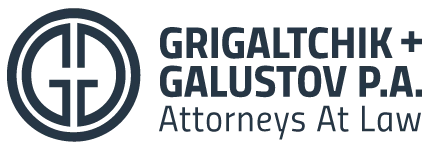Chapter 13 Cram Down Provisions
Chapter 13 Cram Down Provisions
Let’s face it. No one knows what’s going to happen tomorrow. With a sigh, news anchors reference “these uncertain economic times.” And it all begins and ends with you, American business owners — far-seers, risk-takers, trailblazers. Only these days, you can’t see as far, and you can’t risk as much, and you’re tempted to blaze the trail straight for the hills and take cover. But you won’t. It isn’t in your nature. And thankfully, some of the good ol’ fashioned safety nets are still in place.
One such port in a storm is Bankruptcy. Now, I understand that some of you may be hesitant. And you should be. This is not a decision to be made lightly, but one that must be made, often sooner than later, for the benefit of your business. As you know, there are several routes to take. Debt relief via Bankruptcy most commonly takes place under Chapter 7 or Chapter 13 of the Bankruptcy Code. Today, we are concerned primarily with one very important option of Chapter 13 Bankruptcy, but, to begin our discussion, it is important to consider the differences between the two kinds of Bankruptcy.
Bankruptcy under Chapter 7 will allow you to discharge most of your debt, but it comes at a cost. Associated with a Chapter 7 Bankruptcy is the frightening concept of liquidation. Liquidation is the process by which your property is sold, and the proceeds from the sale are used to satisfy your creditors. Of course, this is not to say that you will be stripped of all of your earthly belongings. Certain property, specifically such kinds of property as deemed exempt from liquidation by the law, may not be liquidated. The Homestead Exemption, for example, will effectively deem your primary residence “un-liquidatable”. Another drawback of a Chapter 7 Bankruptcy is its treatment of secured debt. Essentially, you have two choices where it comes to that car that you drive to work, provided it doesn’t qualify as exempt property. You can continue driving it and paying on it by excluding it from the Bankruptcy proceeding altogether or you can give it up for a complete discharge of your obligations. In other words, if you choose to discharge your secured debt in a Chapter 7 proceeding, you will lose the property attached to secure that debt.
In contrast with Chapter 7, Chapter 13 offers a number of options to those who wish to hold on to their non-exempt property. For this reason, Chapter 13 Bankruptcy may be a preferable alternative to Chapter 7, especially where business owners are concerned. Business owners tend to fall into the category of people who require debt relief, but are hesitant to file for Bankruptcy because they don’t want to lose essential, non-exempt business assets. Chapter 13 works differently from Chapter 7. Instead of permitting a complete discharge of your debt, it offers you several options to manage the repayment of your debt. Not everyone will qualify for the Chapter 13 alternative. If you have too much debt, you may be out of luck. The guidelines to determine “too much debt” are updated periodically to reflect changes in the consumer price index. You also have to be capable of paying on your debt, so you will not qualify unless you have an income. But if you do qualify, then you can take advantage of one especially juicy morsel of sweet, soothing debt relief: Chapter 13 Cram Down Provisions.
This is how it works. Say, you’re at your wits end with creditors calling you all the time, and so you decide to declare Bankruptcy under Chapter 13. But, as it turns out, about five years ago, you bought an expensive piece of machinery, valued at approximately $20,000.00. Subsequently, you used it intensely, every day for five years. It simplified your life, and made your business much more productive. New models were developed, and your previously state-of-the-art contraption isn’t as state-of-the-art as it used to be, but it’s still of great value to you and your business. You still owe $18,000.00 on it, and its fair market value is approximately $5,000.00. You want to keep it, but as a non-exempt, secured asset that’s bound to be difficult, and you certainly don’t have eighteen grand lying around.
You’re in luck. Via Chapter 13 Cram Down Provisions, you can have your cake and eat it too, keep your machine and get debt relief simultaneously. Cram Down Provisions address a very interesting question: How can a machine valued at $5,000.00 be used to secure a debt of $18,000.00? Basically, it may not. In the course of your Chapter 13 Bankruptcy, you may have the option to pay $5,000.00, the amount the machine actually secures, for the machine, and remove it as an attachment for the $18,000.00 debt. Most importantly, your business will not have to suffer.
Bankruptcy is a scary word for so many. In these strange, unpredictable times, the right kind of Bankruptcy may mean the difference between shutting the doors on your dreams and persevering. So, as you go about pioneering, scraping along, desperately at times, trying to make your business work, don’t forget that help is available. Bankruptcy is designed to give you a clean slate, to give you the ability to start over without the rain-filled clouds of debt haunting your every move. Using the Cram Down Provisions of Chapter 13 Bankruptcy wisely will help you ensure that, while you’ve hit some hard times, your business won’t have to feel the full impact.


